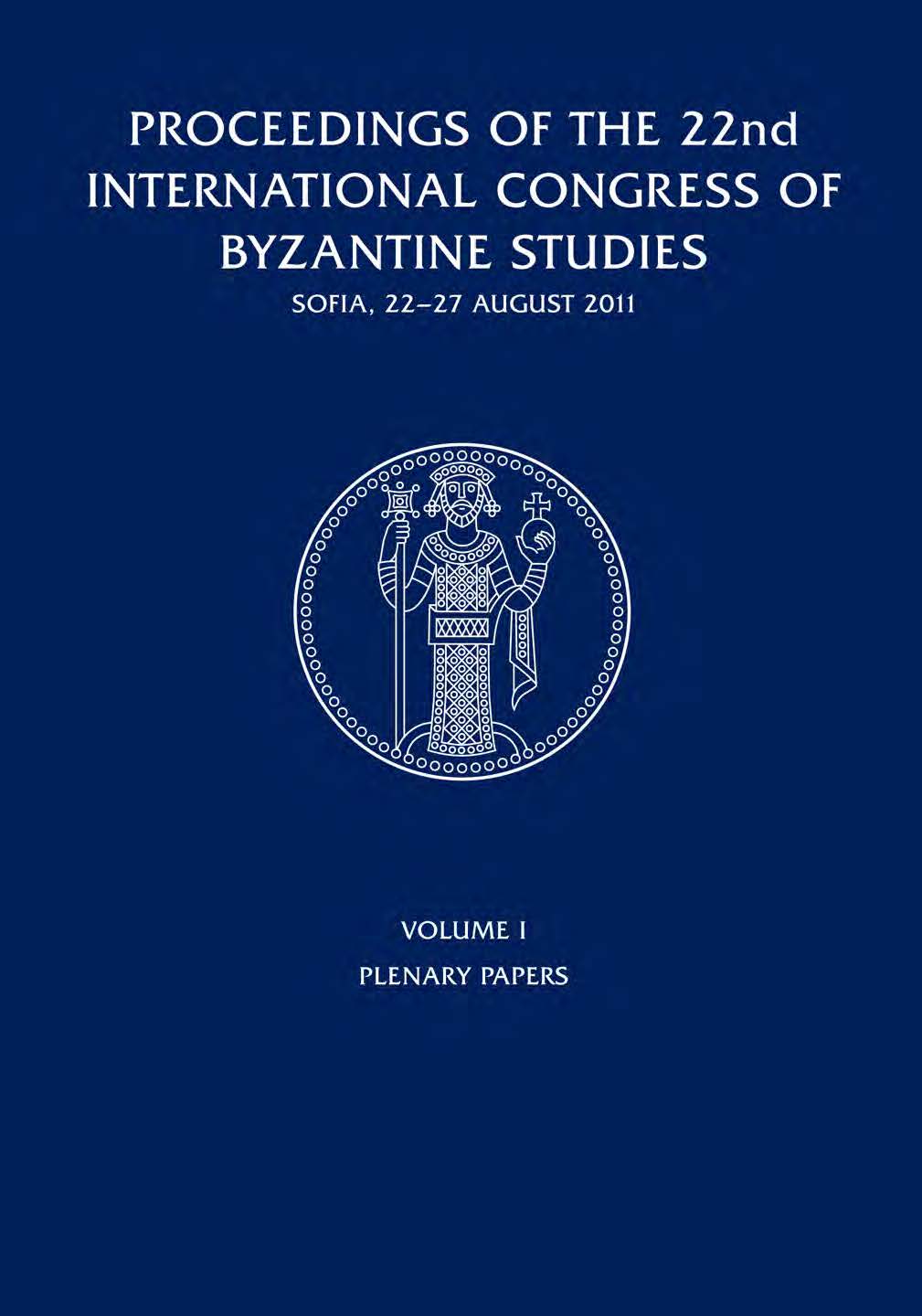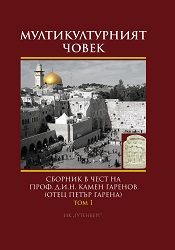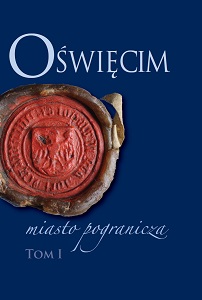
We kindly inform you that, as long as the subject affiliation of our 300.000+ articles is in progress, you might get unsufficient or no results on your third level or second level search. In this case, please broaden your search criteria.







The paper presents part of a hoard containing items of armaments, horse trappings and everyday objects discovered accidentally on the land of the village of Markovo, Shumen region. While inspecting the site of the discovery on the surface the author came across an array of heavily decayed iron items from tools, cattle-breeding equipment, animal bones as well as some fragments of building ceramics and pots of engraved linear decoration and polished strips from the VIII-th - X-th c. The Old Bulgarian signs engraved on some of them refer to the same period and have numerous analogies from Pliska, Madara and Preslav. Then the author assumed that a medieval settlement probably existed in the site of the discovery or the objects fell there by obscure circumstances most probably from the nearby large but insufficiently studied Hambarluk fortress from late Antiquity and the Middle Ages which came into existence in the V-th - Vi-th centuries and continued existing until the XIV-th c. The published materials by analogies fall withing the chronological boundaries of the early Bulgarian Middle Ages and specifically in the mid-X-th - late XI-th centuries.
More...
The Old Bulgarian Blessing of the Waters on the Eve of Epiphany from X-XI centuries is the earliest Slavic copy of that work, giving an account of the very old routine of the Holy Sanctification of the Water, which is performed nowadays on the eve of Epiphany (January 6 - new stile). During the examination of the later Slavic copies of this Convention from the XV-XVII centuries, were discovered two unknown short redactions - one of them from the XVth c. - in Russia, Serbian, and Bulgarian Books of divine services and Prayer-books, and the other - from the year 1782 (in a Church Slavic prayer-book from Hilandar monastery, in Mount Athos). In the article, for the first time, is published the text of the short redaction of the Blessing of the Water on the Eve of Epiphany, from the above mentioned XVIIIth c. Preayer-book.
More...
The author makes a short review of publications of Arabic Ottoman inscription in honour of a sheikh. The paper provides a facsimile, a deciphered text transcribed in Latin, a translation in Bulgarian and coments on the monument. The inscription shows that there were members of the Qadiri tariqa (Sufi order) in the 18th century in Plovdiv and maybe that there was a tekke of this brotherhood.
More...
Volume I of the monograph of Oświęcim contains a presentation of the history of the surrounding land and an analysis of cultural aspects of the city's functioning. At first the authors analyze changes in the boundaries and routes, and route names from the earliest times to the present, and then show the political history of the region, which repeatedly changed its national, administrative and diocesan affiliation. The second part of the volume discusses the development of architecture and art. in Oświęcim, including the most important monuments and silhouettes of the most eminent artists, as well as the development of education. Also, prominent figures from Oświęcim were presented. The volume closes with a calendar of the city's history.
More...
Volume I of the monograph of Oświęcim contains a presentation of the history of the surrounding land and an analysis of cultural aspects of the city's functioning. At first the authors analyze changes in the boundaries and routes, and route names from the earliest times to the present, and then show the political history of the region, which repeatedly changed its national, administrative and diocesan affiliation. The second part of the volume discusses the development of architecture and art. in Oświęcim, including the most important monuments and silhouettes of the most eminent artists, as well as the development of education. Also, prominent figures from Oświęcim were presented. The volume closes with a calendar of the city's history.
More...
Volume I of the monograph of Oświęcim contains a presentation of the history of the surrounding land and an analysis of cultural aspects of the city's functioning. At first the authors analyze changes in the boundaries and routes, and route names from the earliest times to the present, and then show the political history of the region, which repeatedly changed its national, administrative and diocesan affiliation. The second part of the volume discusses the development of architecture and art. in Oświęcim, including the most important monuments and silhouettes of the most eminent artists, as well as the development of education. Also, prominent figures from Oświęcim were presented. The volume closes with a calendar of the city's history.
More...
Volume I of the monograph of Oświęcim contains a presentation of the history of the surrounding land and an analysis of cultural aspects of the city's functioning. At first the authors analyze changes in the boundaries and routes, and route names from the earliest times to the present, and then show the political history of the region, which repeatedly changed its national, administrative and diocesan affiliation. The second part of the volume discusses the development of architecture and art. in Oświęcim, including the most important monuments and silhouettes of the most eminent artists, as well as the development of education. Also, prominent figures from Oświęcim were presented. The volume closes with a calendar of the city's history.
More...
Volume I of the monograph of Oświęcim contains a presentation of the history of the surrounding land and an analysis of cultural aspects of the city's functioning. At first the authors analyze changes in the boundaries and routes, and route names from the earliest times to the present, and then show the political history of the region, which repeatedly changed its national, administrative and diocesan affiliation. The second part of the volume discusses the development of architecture and art. in Oświęcim, including the most important monuments and silhouettes of the most eminent artists, as well as the development of education. Also, prominent figures from Oświęcim were presented. The volume closes with a calendar of the city's history.
More...
Volume I of the monograph of Oświęcim contains a presentation of the history of the surrounding land and an analysis of cultural aspects of the city's functioning. At first the authors analyze changes in the boundaries and routes, and route names from the earliest times to the present, and then show the political history of the region, which repeatedly changed its national, administrative and diocesan affiliation. The second part of the volume discusses the development of architecture and art. in Oświęcim, including the most important monuments and silhouettes of the most eminent artists, as well as the development of education. Also, prominent figures from Oświęcim were presented. The volume closes with a calendar of the city's history.
More...
Volume I of the monograph of Oświęcim contains a presentation of the history of the surrounding land and an analysis of cultural aspects of the city's functioning. At first the authors analyze changes in the boundaries and routes, and route names from the earliest times to the present, and then show the political history of the region, which repeatedly changed its national, administrative and diocesan affiliation. The second part of the volume discusses the development of architecture and art. in Oświęcim, including the most important monuments and silhouettes of the most eminent artists, as well as the development of education. Also, prominent figures from Oświęcim were presented. The volume closes with a calendar of the city's history.
More...
Volume I of the monograph of Oświęcim contains a presentation of the history of the surrounding land and an analysis of cultural aspects of the city's functioning. At first the authors analyze changes in the boundaries and routes, and route names from the earliest times to the present, and then show the political history of the region, which repeatedly changed its national, administrative and diocesan affiliation. The second part of the volume discusses the development of architecture and art. in Oświęcim, including the most important monuments and silhouettes of the most eminent artists, as well as the development of education. Also, prominent figures from Oświęcim were presented. The volume closes with a calendar of the city's history.
More...
Volume I of the monograph of Oświęcim contains a presentation of the history of the surrounding land and an analysis of cultural aspects of the city's functioning. At first the authors analyze changes in the boundaries and routes, and route names from the earliest times to the present, and then show the political history of the region, which repeatedly changed its national, administrative and diocesan affiliation. The second part of the volume discusses the development of architecture and art. in Oświęcim, including the most important monuments and silhouettes of the most eminent artists, as well as the development of education. Also, prominent figures from Oświęcim were presented. The volume closes with a calendar of the city's history.
More...
Volume I of the monograph of Oświęcim contains a presentation of the history of the surrounding land and an analysis of cultural aspects of the city's functioning. At first the authors analyze changes in the boundaries and routes, and route names from the earliest times to the present, and then show the political history of the region, which repeatedly changed its national, administrative and diocesan affiliation. The second part of the volume discusses the development of architecture and art. in Oświęcim, including the most important monuments and silhouettes of the most eminent artists, as well as the development of education. Also, prominent figures from Oświęcim were presented. The volume closes with a calendar of the city's history.
More...
Volume I of the monograph of Oświęcim contains a presentation of the history of the surrounding land and an analysis of cultural aspects of the city's functioning. At first the authors analyze changes in the boundaries and routes, and route names from the earliest times to the present, and then show the political history of the region, which repeatedly changed its national, administrative and diocesan affiliation. The second part of the volume discusses the development of architecture and art. in Oświęcim, including the most important monuments and silhouettes of the most eminent artists, as well as the development of education. Also, prominent figures from Oświęcim were presented. The volume closes with a calendar of the city's history.
More...